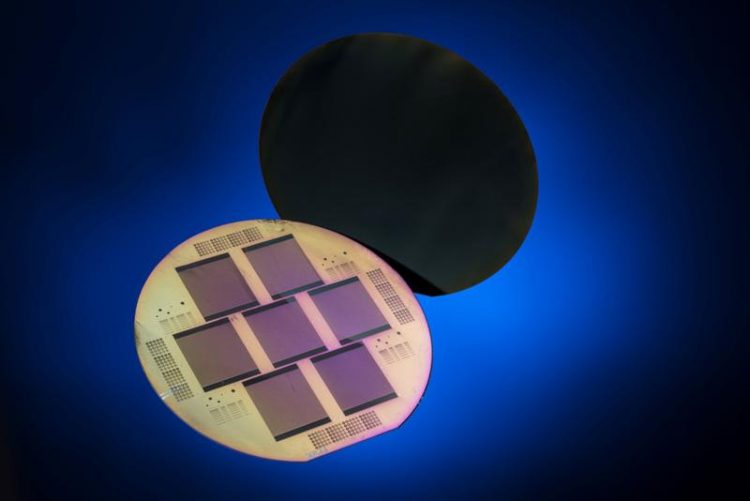Silicon solar cell of ISFH yields 25% efficiency with passivating POLO contacts

Monocrystalline 25%-silicon solar cell with POLO-contacts for both polarities on the rear side of the solar cell. ISFH
The Lower Saxon‘ Institute for Solar Energy Research Hamelin (ISFH), an affiliated institute of the “Leibniz Universität Hannover” in collaboration with the Institute of Electronic Materials and Devices (MBE) of the “Leibniz Universität Hannover” achieved a solar cell efficiency of 25 %.
This result was confirmed by DAkkS-accredited independent calibration laboratory ISFH CalTeC and presented at the Asian conference PVSEC-26 in Singapore.
This high efficiency was achieved with passivating POLO contacts for both polarities, which avoids the otherwise high recombination beneath the metal contacts. POLO stands for “poly-Si on oxide”. The contacts consist of a thin silicon oxide and a doped polycrystalline silicon layer.
The recombination is reduced by the POLO contacts to an extend enabling a high open circuit voltage of 723mV. Both polarities of the POLO layers are located at the rear side of the solar cell, avoiding the shading of the front side by metal fingers and reducing the parasitic absorption in the poly-Si.
The result was achieved on a cell area of 3.97cm2 (designated area).
In the ongoing project the efficiency shall be further increased and complex process steps shall be substituted by industrial relevant processes.
The work was achieved within a joint project, funded by the German Federal Ministry for Economic Affairs and Energy (BMWi), where ISFH cooperates with MBE and the Fraunhofer-Institut für Solare Energiesysteme (ISE).
Media Contact
More Information:
http://www.isfh.de/All latest news from the category: Power and Electrical Engineering
This topic covers issues related to energy generation, conversion, transportation and consumption and how the industry is addressing the challenge of energy efficiency in general.
innovations-report provides in-depth and informative reports and articles on subjects ranging from wind energy, fuel cell technology, solar energy, geothermal energy, petroleum, gas, nuclear engineering, alternative energy and energy efficiency to fusion, hydrogen and superconductor technologies.
Newest articles

Sea slugs inspire highly stretchable biomedical sensor
USC Viterbi School of Engineering researcher Hangbo Zhao presents findings on highly stretchable and customizable microneedles for application in fields including neuroscience, tissue engineering, and wearable bioelectronics. The revolution in…

Twisting and binding matter waves with photons in a cavity
Precisely measuring the energy states of individual atoms has been a historical challenge for physicists due to atomic recoil. When an atom interacts with a photon, the atom “recoils” in…

Nanotubes, nanoparticles, and antibodies detect tiny amounts of fentanyl
New sensor is six orders of magnitude more sensitive than the next best thing. A research team at Pitt led by Alexander Star, a chemistry professor in the Kenneth P. Dietrich…





















